Spring is arguably the best time of year to travel to America’s National Parks. And with nearly 100 days passing without a United States federal holiday between Presidents Day in February and Memorial Day at the end of May – it’s the perfect time to take some PTO and get out there. With temperatures finally heating up, and summer vacation season still months away – consider it an adult spring breeeeeeeeeeeak.
While I’d visit nearly any National Park in April or May, there are some that I’d recommend over others. Some because of the weather, others because they have fewer crowds, and others still because there are flowers in bloom. At the end of the day, there’s a park to suit anyone’s travel goals. Check them out below!
UTAH – ALL OF ‘EM

Shoulder season in Utah is actually a prime season, with bearable temperatures and somewhat lessened crowds. With five incredible parks in the state, spring is the perfect time to take a road trip to one – or five. I’m going to break them out below but seriously, if you’re going to Utah for National Parks — now is the time!
ZION NATIONAL PARK – UTAH
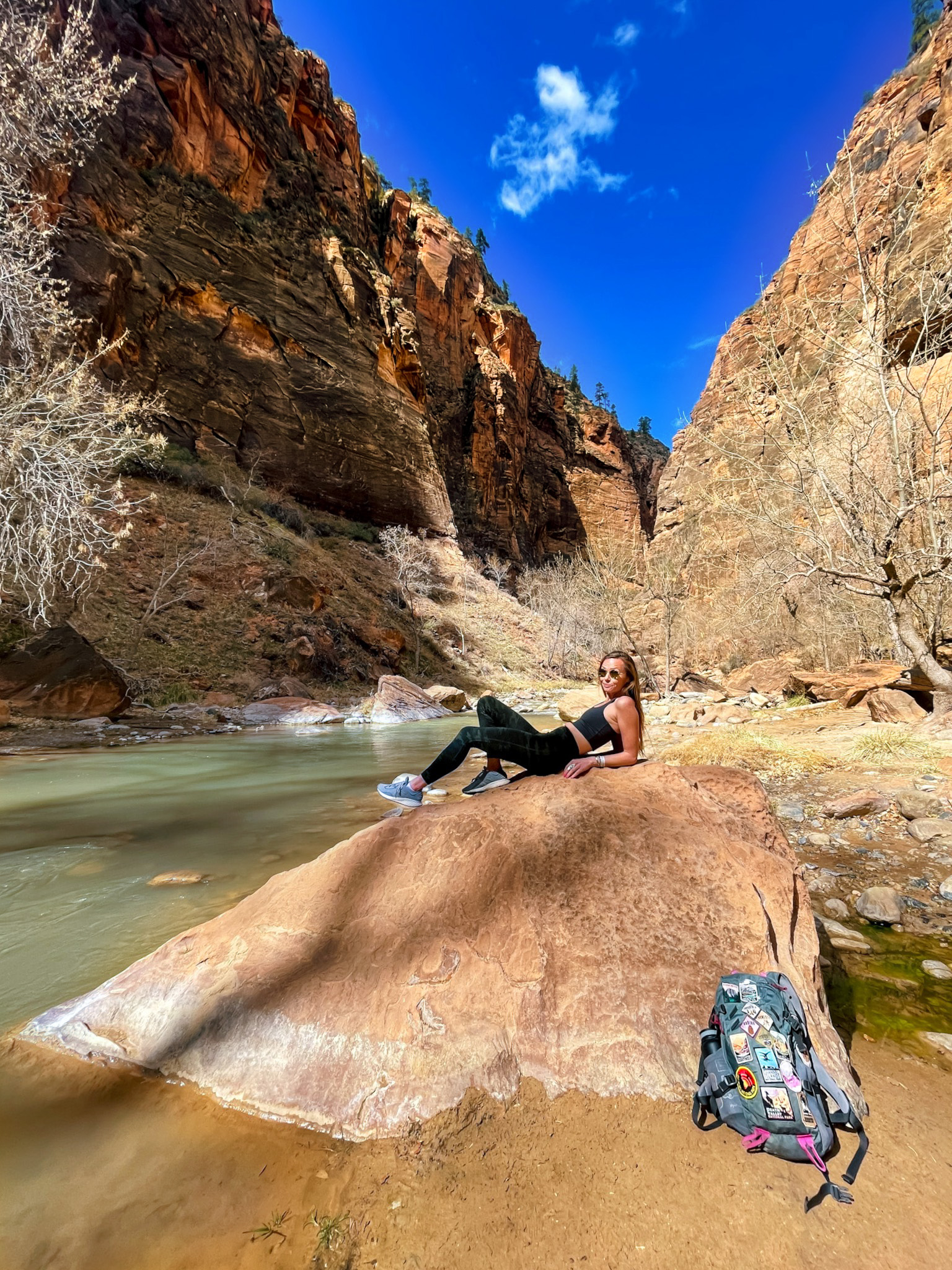
Zion has exploded in popularity throughout the last few years and even with a slight drop in visitation in 2022, was still the third most visited major US National Park out of 63 with 4,692,417 visitors. Its somewhat easy access from Las Vegas or St. George along with the adrenaline-pumping and Instagram-famous Angels’ Landing and Narrows hikes keep visitors steadily streaming to the park’s otherworldly red rock formations.
While spring will still see crowds in the park, the trade-off of bearable weather is worth it – summer temps can soar and make hiking dangerous.
Average April Temperature High / Low(°F): 66° / 36°
Average May Temperature High / Low(°F): 69° / 42°
WHAT TO DO:
Hike! Zion is a hiking park, as Zion Canyon is not accessible to private vehicles – only park buses stop at the popular trailheads along the road. I recommend getting your feet wet – literally – by hiking a portion of The Narrows first, then Angel’s Landing if you dare (and get a permit), or the similar view from Zion Canyon Overlook Trail. You can also bike through the park, then be sure to grab some ice cream and relax on the Zion National Park Lodge lawn.
WHERE TO STAY:
Under Canvas has outposts near many National Park sites, and the Zion location is particularly magical. The safari-style tents provide elevated amenities with the rustic environment you came for.
BRYCE CANYON NATIONAL PARK –UTAH
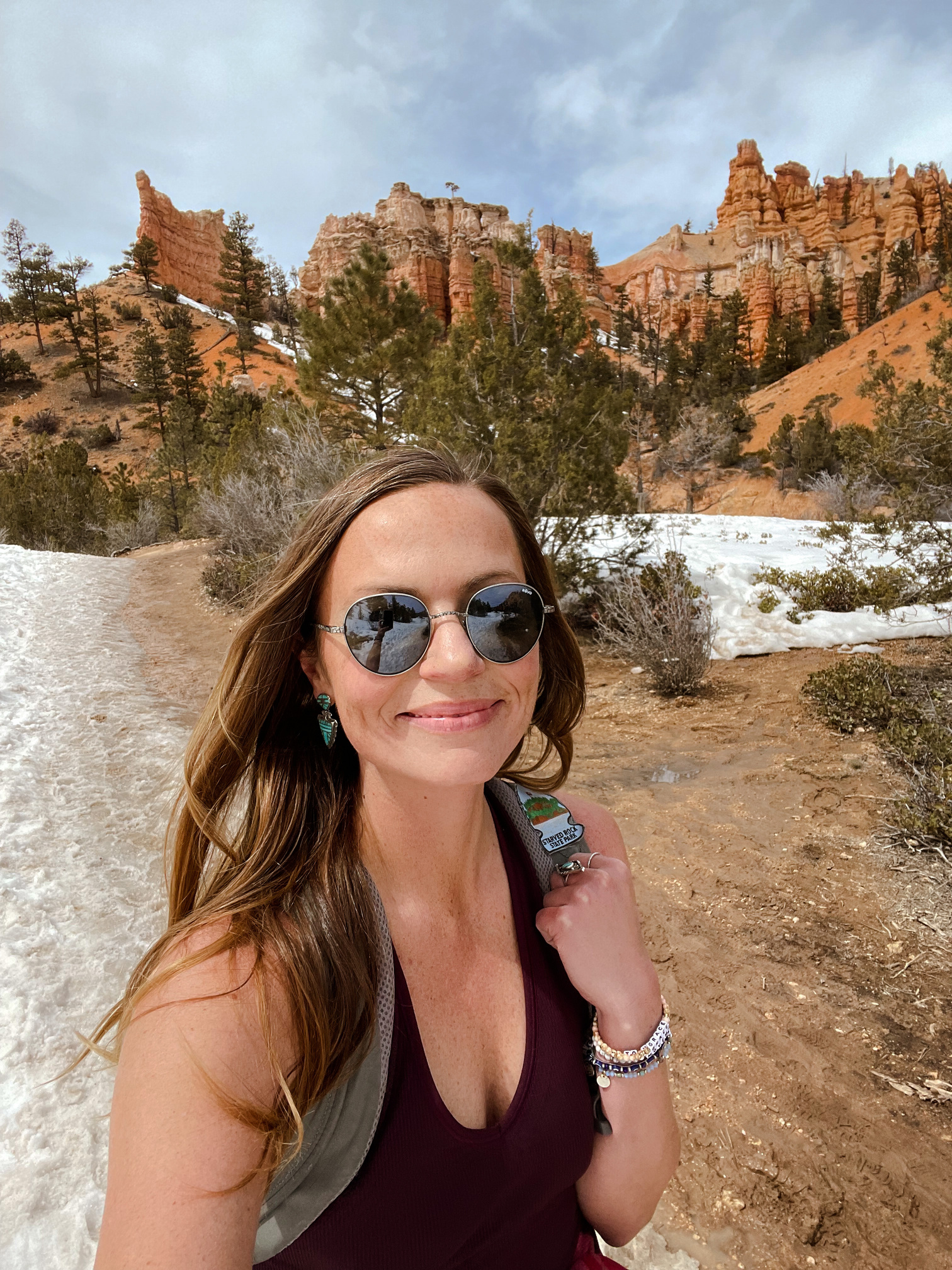
Bryce Canyon sits at the highest overall elevation of any of the “Mighty 5” National Parks in Utah – with elevations reaching 9,100 ft – so unsurprisingly its average spring temperatures are slightly lower, but with the park’s proximity to Zion and Capitol Reef, it’s still a great time to extend your road trip and knock another National Park off your list. The famous hoodoos that cover the landscape are unlike any other park in Utah or in the entire United States period. A visit truly feels like stepping into another world.
Average April Temperature High / Low(°F): 52° / 24°
Average May Temperature High / Low(°F): 62° / 32°
WHAT TO DO:
Hike if you can! There may still be snow (sometimes several feet) covering trails in April, but as time passes more will be accessible. Mossy Cave Trail is an easy jaunt into the canyon that is accessible for nearly all ability levels, whereas Queens Garden/Navajo Loop Trail is a moderate option that is by far the most popular in the park.
WHERE TO STAY:
Bryce Canyon is in a fairly remote area of Utah, but there are plenty of hotel and motel options. I stayed at the more upscale Stone Canyon Inn on my last trip and loved the location, on-site restaurant, and private luxury bungalow accommodations after a day spent outside.
CANYONLANDS NATIONAL PARK – UTAH

Canyonlands National Park is the kind of park a lot of people know of, and have maybe visited briefly due to its proximity to Moab – but it’s not a park that has ever felt overrun or crowded to me. With over 520 square miles of protected lands, the park is divided into four distinct districts: the Island in The Sky, The Needles, The Maze, and the rivers themselves – the Colorado and Green. Island in the Sky is the most popular due to its proximity to Moab and also the most visited.
Average April Temperature High / Low(°F): 67° / 37°
Average May Temperature High / Low(°F): 78° / 46°
WHAT TO DO:
The options are nearly endless in this expansive park, but if you opt for Island in the Sky I’d recommend spending some time on the scenic drive, stopping at the overlooks then hiking the short and social-media famous Mesa Arch Trail – try for sunrise if you can – and Gooseberry Trail if you want a challenge.
WHERE TO STAY:
You’ll likely want to stay in nearby Moab which has plenty of options for any type of traveler. I’d recommend Under Canvas Moab for a glamping experience or the historic Moab Springs Ranch for an upscale oasis after a day amongst the red rocks.
ARCHES NATIONAL PARK – UTAH
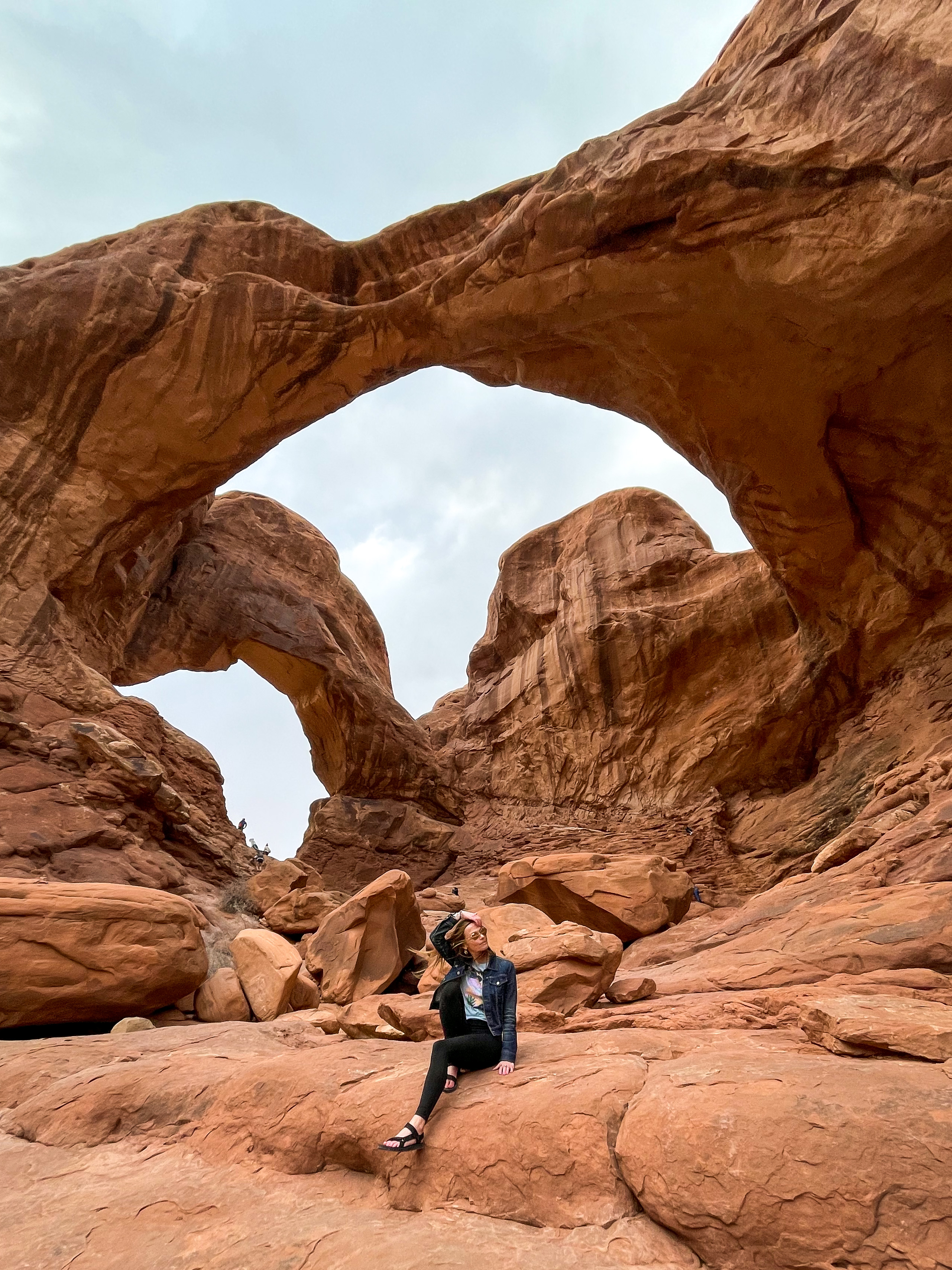
Arches National Park in Moab Utah is endlessly fascinating and unique. It is also fairly small in comparison to other Utah parks, spanning just 76,000 acres. With one entry and exit and its close proximity to the city, it gets crowded very quickly, and as such timed entry reservations are required to enter from April 1 – October 1. With some planning in advance, timed entry tickets shouldn’t be too difficult to acquire, and well worth it to see the over 2,000 documented natural arches that the park protects and preserves.
Average April Temperature High / Low(°F): 69° / 40°
Average May Temperature High / Low(°F): 79° / 49°
WHAT TO DO:
Arches is, like all the Utah parks, known for some incredible hikes. From the social-media (and Utah license plate) famous Delicate Arch trail to the Devil’s Garden Trail. It’s also very accessible for the non-hikers among us with incredible viewpoints just steps from the road.
WHERE TO STAY:
There are tons of lodging options in Moab, but I’d opt for the nearby Red Cliffs Lodge on the Colorado River.
CAPITOL REEF NATIONAL PARK – UTAH

Of all the National Parks in Utah, Capitol Reef is the least visited – but not for any lack of beauty. The park is one of my favorites and still feels like somewhat of a hidden gem due to its remote location. There are three districts in the park: the historic Fruita District (where most people visit), Cathedral Valley, and the Waterpocket Fold preserving 241,904 acres of land.
Average April Temperature High / Low(°F): 64° / 37°
Average May Temperature High / Low(°F): 73° / 46°
WHAT TO DO:
No surprise here, but you’ll want to hike in Capitol Reef! Try the easy Capitol Gorge or the more strenuous Chimney Rock Loop. Also, be sure to stop by the fruit orchards in Fruita – in the park just a few minutes past the visitor center – remnants of the pioneers that once inhabited the area, the orchards are still producing fruit today and have u-pick areas.
There are also amazing opportunities for scenic driving in the park including the main road from the visitor center into Capitol Gorge and the unpaved Cathedral Road that winds into Cathedral Valley.
WHERE TO STAY:
Cougar Ridge Resort in nearby Torrey, Utah is an upscale and luxurious, family-owned property with everything you need to relax and recharge after an adventurous day.
OLYMPIC NATIONAL PARK – WASHINGTON

April may not be the month most people would recommend visiting Olympic National Park on the Olympic Peninsula in Washington, but it’s always my go-to. I have visited the park several times – twice in later April and once in early May and all three of those times, while I did get rained on, I also was able to find incredible solitude that wouldn’t be possible in the summer months. For example, in 2022, April saw just over 92,000 visitors and May saw over 133,000 recreational visits with June jumping up to over 224,000 – the amount in April and May combined. So if solitude in one of the country’s most peaceful places (a spot in the parks Hoh Rainforest is quite literally the quietest place in the continental US) is important to you, this is the perfect time to head northwest.
Average April Temperature High / Low(°F): 42° / 26° (14 days of rain on average)
Average May Temperature High / Low(°F): 49° / 28°
WHAT TO DO:
Olympic is one of my favorite parks to visit and to recommend because it is so varied. From hiking through the Hoh Rainforest to watching a sunset on Ruby Beach to climbing the strenuous Mount Storm King or just kicking back at one of the historic and beautiful lodges on the Peninsula – there is something for everyone. I’d recommend a counterclockwise route around the Penninsula, and heading up to Cape Flattery (outside of the National Park but on the Penninsula) to experience the beauty of the furthest northwest tip of the contiguous United States.
WHERE TO STAY:
If you’re a fan of Twilight you’ll probably want to opt for one of the many lodging options in Forks. Otherwise, I’d try to stay at a National Park Lodge – some options are Kalaloch Lodge which is open year-round, Lake Crescent Lodge which opens at the end of April, and Sol Duc Hot Springs Resort which opened for the season at the end of March.
BIG BEND NATIONAL PARK – TEXAS
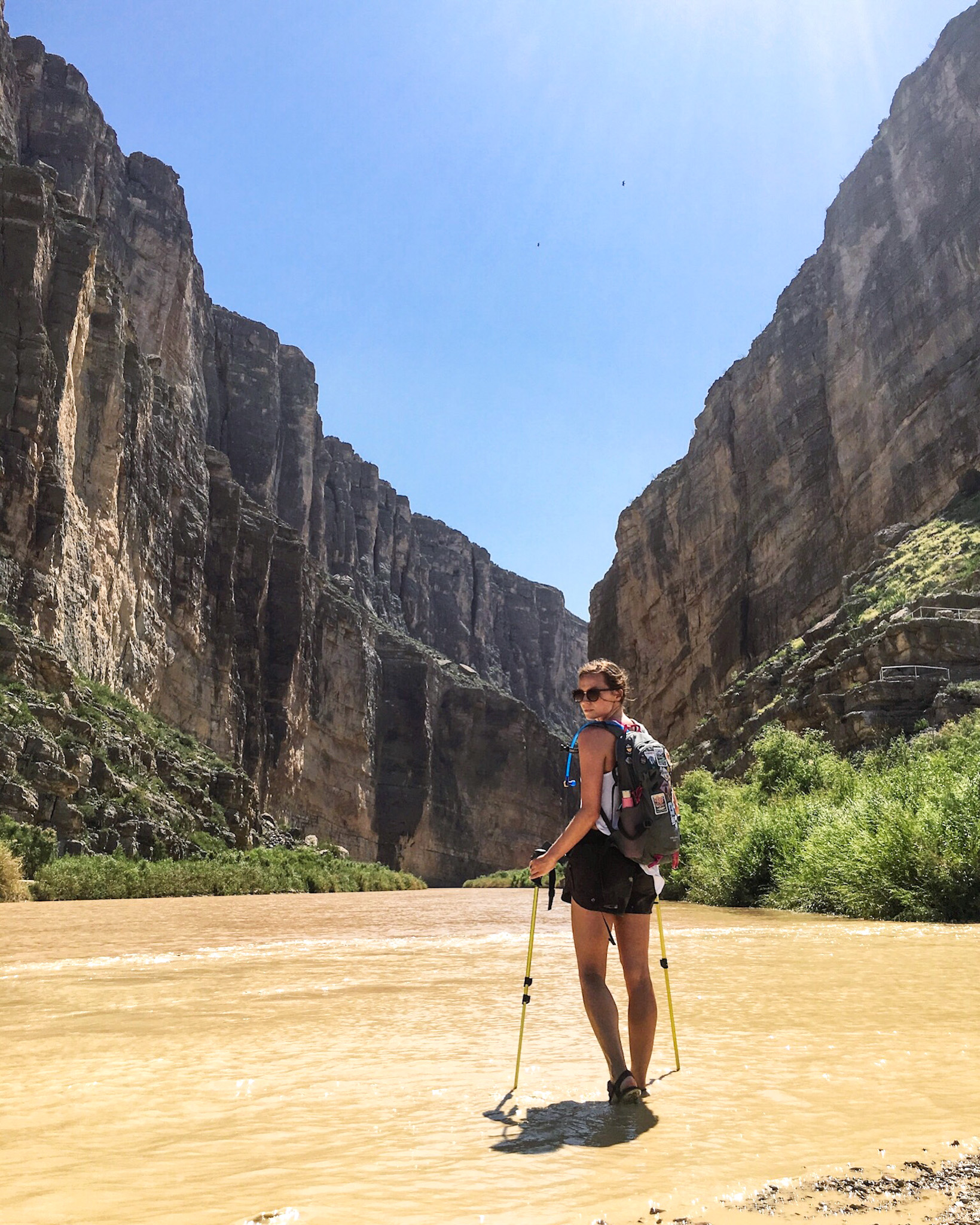
Located in far West Texas on the southern border, Big Bend National Park is as remarkable as it is remote. Due to its remoteness, it does not receive nearly as many visitors as some other parks in the West, and due to its scorching summer temperatures, the best time to visit is definitely spring or fall. With mountains, desert, and canyons this is a bucket list-worthy park that will absolutely surprise you.
Average April Temperature High / Low(°F): 77° / 55°
Average May Temperature High / Low(°F): 83° / 61°
WHAT TO DO:
Like many things in Texas, Big Bend is big – larger than the entire state of Rhode Island. You’ll need several days to get close to seeing much of the park, but any visitor should be sure to head down to Santa Elena Canyon, hike the Lost Mine Trail, and cruise the Ross Maxwell Scenic Drive.
WHERE TO STAY:
Lots of unique lodgings have popped up near Big Bend in the last several years, my favorites being the retro airstreams at Tin Valley Rentals and the unique bubble and lotus tents at Basecamp and Adventure Terlingua.
DRY TORTUGAS NATIONAL PARK – FLORIDA
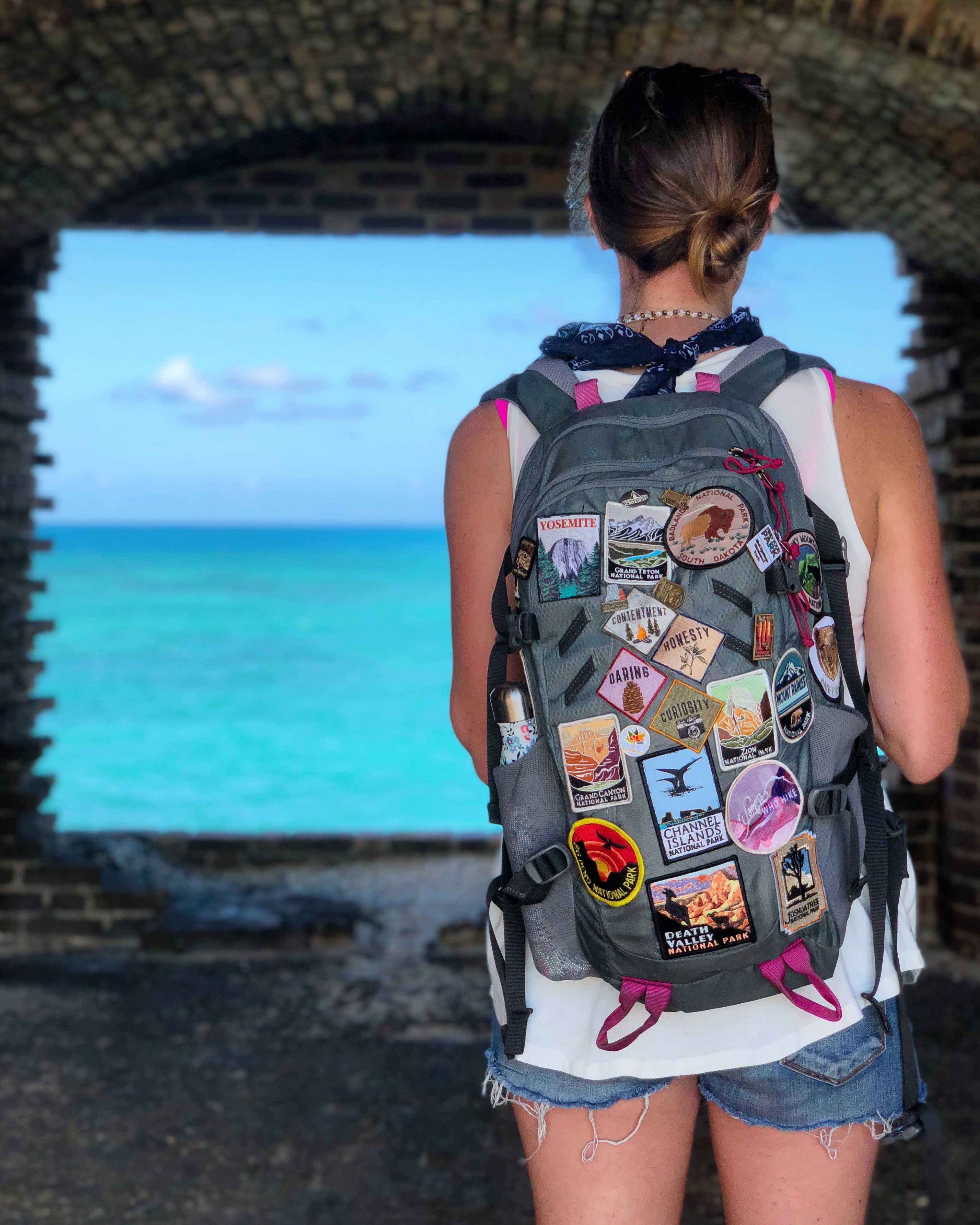
Dry Tortugas, the National Park comprised of a string of 7 islands in the Gulf of Mexico west of Key West, is a park I recommend for many seasons – but spring might just be the best. Before hurricane season begins in June, but after the holiday and spring break rush in South Florida, this is a great time to get out on the otherworldly crystal blue waters and explore Fort Jefferson. With options to travel to the island via ferry or seaplane from Key West, it is an easy trip that will take you to a truly unforgettable experience.
Average April Temperature High / Low(°F): 83° / 71°
Average May Temperature High / Low(°F): 86° / 74°
WHAT TO DO:
When visiting Dry Tortugas you will be transported to Garden Key, home of the monstrous Fort Jefferson. While the Key itself is small, there is no shortage of activities. Explore the history of the fort, relax, swim, or snorkel on the pristine beaches, bring your own kayak to paddle on the bright blue water, or camp for the night for epic stargazing.
WHERE TO STAY:
The only option to stay in the park itself is camping which is pack-in, pack-out. Many visitors also opt to stay in Key West where there are endless lodging options. I love Parrot Key Hotel & Villas with its spacious rooms and multiple pools







